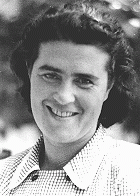You searched for: 点赞分享赚钱系统定制开发【TG���������@EK7676】平台包网搭建点赞分享赚钱系统定制开发【TG���������@EK7676】平台包网搭建45lYiA56c7
<< Previous | Displaying results 51-100 of 136 for "点赞分享赚钱系统定制开发【TG���������@EK7676】平台包网搭建点赞分享赚钱系统定制开发【TG���������@EK7676】平台包网搭建45lYiA56c7" | Next >>
-
Regina Gutman
ID CardRegina was born in Radom, a city that had 120,000 inhabitants. Her father worked as a leather cutter for a large shoe manufacturer and her mother took care of their six children. The Gutmans were very religious and Regina attended Hebrew school in the afternoons. Radom had a vibrant Jewish community of some 30,000 people, several Yiddish daily newspapers, and beautiful synagogues. 1933–39: On September 1, 1939, the German army invaded Poland, and seven days later, Radom was occupied. Soon afterward, the…
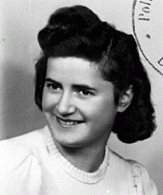
-
Sam Spiegel
ID CardSam was the eldest of five children born to Jewish parents in Kozienice, a town in east central Poland. His father owned a shoe factory and his mother cared for the children and the home. Kozienice had a thriving Jewish community that made up about half of the town's population. 1933–39: On September 1, 1939, German troops invaded Poland. That morning the Spiegels heard an air raid siren blaring and quickly left their house. Fifteen minutes later a bomb struck the building. Sam was just 17 years old.…
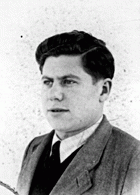
-
Elzbieta Lusthaus
ID CardElzbieta grew up in Iwonicz, a resort town in southwestern Poland noted for its mineral water. Her father, Edmund, was a respected physician and Helena, her mother, had studied pharmacology. At home, they spoke Polish and were among the few Jewish families who lived in Iwonicz. 1933–39: When German troops invaded Poland on September 1, 1939, Elzbieta's father was drafted into the Polish army. Seventeen days later, the Soviet army drove in from the east and Edmund was captured. He was transported to a…
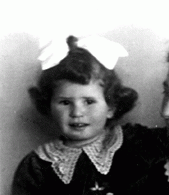
-
Susi Hilsenrath
ID CardThe Hilsenraths lived in Bad Kreuznach, a city in western Germany with a Jewish community that dated back to the 13th century. Susi was the eldest of three children. Her father owned a thriving linen store, and her mother took care of Susi and her two brothers. 1933–39: After the Nazis came to power, the Hilsenraths, like other Jewish families, began to feel the effects of increased antisemitism. Susi was forced to leave the public school, along with the other Jewish children. Even walking on the…
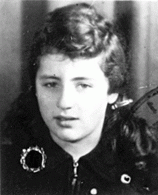
-
Barbara Marton
ID CardThe Martons were one of 35 Jewish families in the small northern Transylvanian town of Beliu. Barbara's father owned a grocery, and her mother helped out in the store. The Martons lived in a comfortable home with a flower garden, and enjoyed friendly relations with the townspeople. As a child, Barbara learned Hebrew on Sunday mornings at the home of Beliu's rabbi. 1933-39: Barbara's father's business began to fall off when another grocery opened nearby in Beliu. By 1937 business was so bad that they sold…
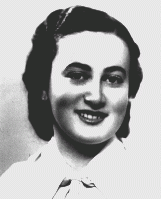
-
Chaim Frenkiel
ID CardChaim was the third of seven boys born to religious Jewish parents. They lived in a town near Warsaw called Gabin, where Chaim's father worked as a cap maker. Gabin had one of Poland's oldest synagogues, built of wood in 1710. Like most of Gabin's Jews, Chaim's family lived close to the synagogue. The family of nine occupied a one-room apartment on the top floor of a three-story building. 1933-39: In September 1939, two months before Chaim was 12, Germany invaded Poland. In Gabin 10 people were shot in…
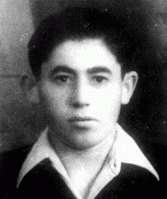
-
Jakob Frenkiel
ID CardJakob was one of seven boys in a religious Jewish family. They lived in a town 50 miles west of Warsaw called Gabin, where Jakob's father worked as a cap maker. Gabin had one of Poland's oldest synagogues, built of wood in 1710. Like most of Gabin's Jews, Jakob's family lived close to the synagogue. The family of nine occupied a one-room apartment on the top floor of a three-story building. 1933-39: On September 1, 1939, just a few months before Jakob turned 10, the Germans started a war with Poland.…

-
Abraham Wijnberg
ID CardAbraham, or "Braham" as he was nicknamed, was the oldest of four children. When Braham was 14, his Jewish parents moved to the town of Zwolle, where they built a kosher hotel. Braham attended Dutch public schools. Monday through Thursday afternoons he also went to religious school where he learned Hebrew, Jewish history and the Bible. 1933-39: Abraham felt that it was a shame that he had to forfeit a scholarship to college in Groningen, but he had to stay in Zwolle to help his parents with the hotel.…
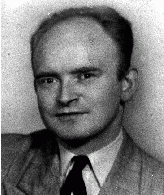
-
Ludmilla Schatz
ID CardLudmilla was one of four children born to Jewish parents in a small industrial city in southwestern Ukraine when the area was part of Tsarist Russia. Ludmilla grew up in Odessa, but she and her mother left in 1919 when Ludmilla's father was killed during the Russian civil war. Ludmilla and her mother emigrated to France and settled near Paris. Ludmilla married, and gave birth to a daughter in 1930. 1933-39: With her knowledge of Russian, French and German, Ludmilla felt comfortable in cosmopolitan Paris.…
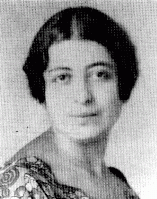
-
Rachel Lejzerowicz Rechnitz
ID CardRachel, or Ruchla as she was called, was raised by Jewish parents in the small southwestern Polish town of Bedzin. In 1930 she moved with her husband, Bernard, to the nearby city of Katowice, where Bernard had a wholesale leather business. The couple lived with their two children, Moses and Genia, in a three-bedroom, upper-floor apartment on Jordana Street. 1933-39: Ruchla was active in Hadassah, a women's Zionist organization, and in 1939 she and her husband prepared to immigrate to Palestine [Aliyah…

-
Saul Ingber
ID CardSaul was born to a Jewish family in the small northern Transylvanian town of Moisei, famous for its 18th-century monastery, to which many Christians came on pilgrimage. Saul's family was religious. His father transported lumber to several mills in the area. 1933-39: Saul and his brothers attended a Jewish school held at their neighbor's home. A rabbi led them in prayers and they learned quotations from holy texts. After his schooling he needed to learn a trade, so he decided to become a tailor. Jews were…
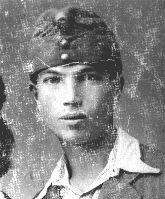
-
Fischel (Philip) Goldstein
ID CardFischel was the youngest of five children. He came from a Jewish family of artisans; his father was a tailor, his uncles were furriers, and his sister was a dressmaker. Fischel started his education at a Jewish parochial school at age 3, where he studied Hebrew and Yiddish. He continued his education at Jewish private schools until age 10, when he entered Polish public schools. 1933-39: After graduating from the Polish public school system at age 14, Fischel started an apprenticeship in his father's…

-
Claude Brunswic
ID CardClaude was one of five children born to Jewish parents in the university city of Heidelberg. His father, a physician specializing in internal medicine, had his practice on the first floor of the apartment building in which the family lived. Claude was an avid swimmer until November 1932, when local Nazi party edicts forbad Jews to use the city pool where he swam. 1933-39: In January 1933, just after Hitler became chancellor of Germany, hoodlums attacked Jewish-owned businesses in Heidelberg. They broke…
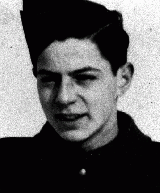
-
Amalie Petranker
ID CardAmalie was one of three daughters born to Jewish parents. The family lived in Stanislav [Stanislawow], Poland. Her father was an ardent supporter of resettlement in Palestine, and dreamed of moving his family there to help build the Jewish homeland. Amalie and her sisters attended private Hebrew primary and secondary schools to help prepare them for their eventual immigration to Palestine. 1933-39: In September 1939 Stanislav [Stanislawow] was occupied by the Soviet army. Amalie's father lost his job in…
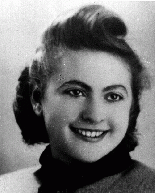
-
Faiga Grynbaum
ID CardFaiga was one of nine children born to religious Jewish parents in Starachowice, a town in east-central Poland. Their small one-story house served as both the family's residence and their tailor shop. Faiga worked in the shop sewing women's clothes; the tailoring was often done in exchange for goods such as firewood or a sack of potatoes. 1933-39: In 1935 Faiga married Haskel Ochervitch. She moved to Kielce, a larger town some 25 miles southwest of Starachowice, where her husband worked selling meat to…

-
Aron Tabrys
ID CardAron was the second of six children born to Jewish parents in Vilna, a city known as a center of Jewish cultural life. He was called Arke by his friends and family. Aron's father supported his large family on the meager income of a chimney sweep. 1933-39: As a child Aron attended a Jewish day school, and then went on to attend a public secondary school. When he was 14 his father had an accident which rendered him blind, and Aron had to start working full-time to support the family. Aron belonged to an…

-
Feliks Bruks
ID CardFeliks was the only child of Catholic parents living in Czarnkow, a town close to the German border, some 40 miles north of Poznan. Czarnkow was situated on the Notec River. Feliks' parents owned a mineral water, soda and beer factory. They delivered their goods by horse and wagon to towns throughout the area. His parents also owned a restaurant and 120 acres of farmland. 1933-39: In 1937 Feliks entered the University of Poznan to study pharmacy. His education was cut short when the German army invaded…

-
Francis Ofner
ID CardFrancis grew up in a city with a Jewish community of 5,000. The Ofners belonged to a synagogue that sponsored many social activities, from sports to care for the elderly. In 1931 Francis began law school at the University of Zagreb. While a student, he organized a service that posted on university bulletin boards the translations of speeches by Nazi leaders broadcast on the radio. 1933-39: By the time Hitler became chancellor of Germany, Francis was heavily involved in trying to unify the university's…
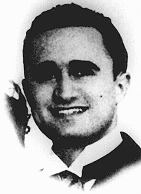
-
Erika Neuman
ID CardErika was born in Znojmo, a town in the Czech region of Moravia with a Jewish community dating back to the 13th century. Her father was a respected attorney and an ardent Zionist who hoped to immigrate with his family to Palestine. In 1931 the Neumans moved to Stanesti, a town in the Romanian province of Bukovina, where Erika's paternal grandparents lived. 1933–39: In Stanesti, Erika attended the public school as well as the Hebrew school, which her father had helped to found. She loved to play with her…
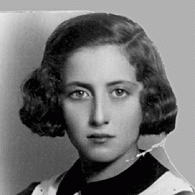
-
Michal Scislowski
ID CardMichal was one of two children born to Catholic parents living in Siedlce, a large town some 65 miles east of Warsaw. Michal's father was an intelligence officer in the Polish army. Because his duty station frequently changed, the family lived in several towns along the Polish-Soviet border. As a child, Michal enjoyed photography and was active in the boy scouts. 1933-39: Michal's family was living in Wilejka, a town near Vilna, when the Germans attacked Poland on September 1, 1939. The Soviet army…
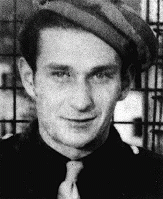
-
Shulamit Perlmutter (Charlene Schiff)
ID CardShulamit, known as Musia, was the youngest of two daughters born to a Jewish family in the town of Horochow, 50 miles northeast of Lvov. Her father was a philosophy professor who taught at the university in Lvov, and both of her parents were civic leaders in Horochow. Shulamit began her education with private tutors at the age of 4. 1933-39: In September 1939 Germany invaded Poland, and three weeks later the Soviet Union occupied eastern Poland, where Shulamit's town was located. Hordes of refugees…

-
Gerda Weissmann
ID CardGerda was born to a Jewish middle-class family in Bielsko, Poland, a town noted for its textile industry. She began her education in Polish public school, but later entered a Catholic girls school. A rabbi was permitted to come into the school and instruct the Jewish students in religious studies. 1933-39: On Friday, September 1, 1939, German fighter planes appeared overhead, causing many people to flee the city. Gerda's family remained and lived through the intense shelling that followed on Sunday…
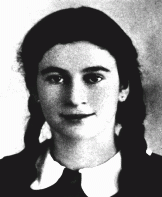
-
Thomas Buergenthal
ID CardThomas Buergenthal was born in May 1934 in the town of Ľubochňa, Czechoslovakia. His parents, Mundek and Gerda, were Jews who had fled the Nazi rise to power in Germany. In Ľubochňa, Mundek ran a hotel that welcomed other refugees and exiles fleeing Nazi persecution. 1933-39: In 1938-1939, Nazi Germany dismantled the country of Czechoslovakia and created the satellite state of Slovakia. As a result, Thomas and his family fled from Slovakia to neighboring Poland. They hoped eventually to immigrate to…
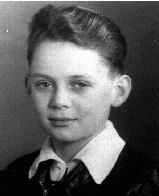
-
Fruma Lieberman Perlmutter
ID CardFruma was one of four children born to a Jewish family in the Polish village of Luczyce. Her parents owned a large farm near the village. In the early 1920s, Fruma married Simcha Perlmutter, a philosophy professor at the university in Lvov, and the couple settled in Horochow. By 1929 the couple had two daughters, Tchiya and Shulamit. 1933-39: In September 1939, as Simcha was arranging for his family to immigrate, Germany invaded Poland. Three weeks later the Soviet Union occupied eastern Poland where…

-
Inge Auerbacher
ID CardInge was the only child of Berthold and Regina Auerbacher, religious Jews living in Kippenheim, a village in southwestern Germany near the Black Forest. Her father was a textile merchant. The family lived in a large house with 17 rooms and had servants to help with the housework. 1933-39: On November 10, 1938, hoodlums threw rocks and broke all the windows of Inge's home. That same day police arrested her father and grandfather. Inge, her mother and grandmother managed to hide in a shed until it was…
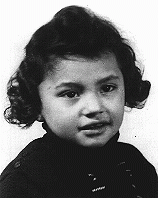
-
Machla Spicehandler Braun
ID CardRaised in Lowicz, Poland, in a religious Jewish family, Machla moved to Lodz when she married Jacob Braun. Her husband worked as a businessman and real estate investor. He became the landlord for an apartment building where he and his family also lived. Machla, a housewife, cared for their five children, who ranged in age from 5 to 15. 1933-39: Machla worked as a volunteer for the Zionist cause. The Brauns were a close family, and Machla's daughters Lena and Eva held their weddings in the Braun's large…
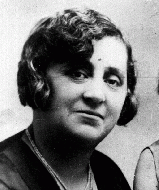
-
Renate Guttmann
ID CardRenate, her twin brother, Rene, and their German-Jewish parents lived in Prague. Shortly before the twins were born, Renate's parents had fled Dresden, Germany, to escape the Nazi government's policies against Jews. Before leaving Germany to live in Czechoslovakia, Renate's father, Herbert, worked in the import-export business. Her mother, Ita, was an accountant. 1933-39: Renate's family lived in a six-story apartment building along the #22 trolley line in Prague. A long, steep flight of stairs led up to…
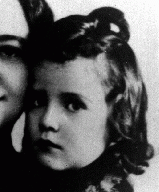
-
Gregor Wohlfahrt
ID CardGregor was born in a village in the part of Austria known as Carinthia. During World War I, he served in the Austro-Hungarian army and was wounded. Raised a Catholic, Gregor and his wife became Jehovah's Witnesses during the late 1920s. Gregor supported his wife and six children by working as a farmer and quarryman. 1933-39: The Austrian government banned Jehovah's Witness missionary work in 1936. Gregor was accused of peddling without a license and briefly jailed. When Germany annexed Austria in 1938,…
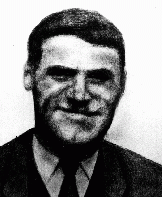
-
Rev. Marian Jacek Dabrowski
ID CardMarian was raised by Catholic parents in Niewodowo, a town in Poland's Bialystok Province near Lomza. His family lived there under Tsarist rule until 1918, when Poland regained its independence. Following high school, Marian joined the Capuchin Franciscan Order of Friars. After eight years of study in France and Italy, he returned to Poland to teach philosophy to students of his order. 1933-39: When Germany invaded Poland in September 1939, Marian was at his monastery near Grodno. They evacuated the…
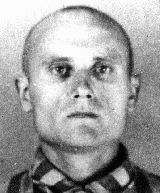
-
Ruth (Huppert) Elias
ID CardRuth grew up in Moravska Ostrava, a city in the region of Moravia with the third-largest Jewish community in Czechoslovakia. When Ruth was a child her parents divorced. She and her sister, Edith, moved in with their paternal grandmother and then with their uncle, but they kept in close contact with their father. Ruth trained to be a pianist and hoped to attend a musical academy in Prague. 1933-39: In March 1939 Bohemia and Moravia were occupied by the Germans and declared a German protectorate. That fall,…
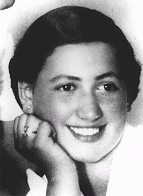
-
Rene Guttmann
ID CardRene, his twin sister, Renate, and their German-Jewish parents lived in Prague. Shortly before the twins were born, Rene's parents had fled Dresden, Germany, to escape the Nazi government's policies against Jews. Before leaving Germany to live in Czechoslovakia, Rene's father, Herbert, had worked in the import-export business. His mother, Ita, was an accountant. 1933-39: Rene's family lived in a six-story apartment building along the #22 trolley line in Prague. A long, steep flight of stairs led up to…

-
Jacob Wasserman
ID CardJacob was the eldest of three sons born to religious Jewish parents in the city of Krakow. His father was a flour merchant. The Wassermans spent summer vacations near Proszowice at a farm owned by their grandfather, who also ran a flour mill. 1933-39: In March 1939, at the age of 13, Jacob celebrated his bar-mitzvah. That summer, his family vacationed as usual at his grandfather's farm. They returned to a nightmare. Krakow had been occupied by the Germans on September 6. Jews were not allowed to walk on…
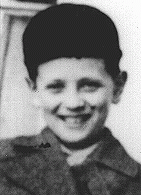
-
Hela Los
ID CardOne of nine children, Hela grew up in the Polish capital of Warsaw. Her father was an art and antique furniture dealer and had a store on Marszalkowska Street. Every year, from the beginning of the summer break until the Jewish High Holidays in the fall, the Los family vacationed in the town of Miedzeszyn, located a short train ride's distance from Warsaw. 1933-39: Hela and her family were still at their vacation home when the Germans entered Warsaw on September 28, 1939. As soon as it became possible,…
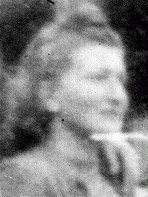
-
Chil Meyer Rajchman
ID CardChil was one of six children born to a Jewish family in the industrial city of Lodz. His mother died before World War II, leaving his father to raise the family. Chil's father could not sustain the family financially, so Chil, as the eldest male child, went to work to help support his brothers and sisters. 1933-39: On September 1, 1939, the Germans invaded Poland. Chil fled Lodz with his younger sister to Pruszkow, a small town 10 miles southwest of Warsaw, where there were fewer restrictions on Jews.…

-
Sossia Frenkiel
ID CardSossia and her husband, Isadore, were the parents of seven boys. The Frenkiels, a religious Jewish family, lived in a one-room apartment in a town near Warsaw called Gabin. Like most Jewish families in Gabin, they lived near the synagogue. Sossia cared for the children while Isadore worked as a self-employed cap maker, selling his caps at the town's weekly market. 1933-39: Because of the Depression, Isadore's business had fallen off, but the Frenkiels managed to continue providing for their family.…

-
Doriane Kurz
ID CardDoriane Kurz’s parents, Klara and Emil Meilech Kurz, settled in Vienna, where her father ran a thriving branch of the family's multinational optical frames business. 1933-39: Doriane was born in Vienna just two years before the Germans annexed Austria in March 1938. Her family fled to the Netherlands soon after the annexation. The Kurz family moved to the town of Maastricht where a branch of the Kurz Brothers' optical frames business was located. Doriane attended nursery school in Maastricht, but the…
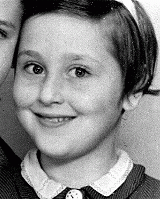
-
Kalman Goldberg
ID CardKalman was one of seven children born to religious Jewish parents in the town of Tarnow. He attended public school in the morning and religious school in the afternoon. Kalman's father owned a factory that manufactured kosher soap, sabbath candles and candles for church altars. The Goldbergs lived above their factory, which was located in a predominantly Jewish neighborhood. 1933-39: The Germans occupied Tarnow on September 8, 1939. The next day, they burned the synagogues. One synagogue, built of stone…

-
Ita Grynbaum
ID CardIta was the second-youngest of nine children born to religious Jewish parents in Starachowice, a town in east-central Poland. Their small one-story house served as both the family's residence and their tailor shop. The tailoring was often done in exchange for goods such as firewood or a sack of potatoes. Ita often helped her mother with chores around the house. 1933-39: Ita's father died at home on a Saturday in June 1939, shortly after returning from synagogue. He had lain down to rest, when suddenly…
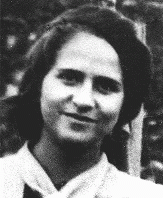
-
Chuna Grynbaum
ID CardChuna was born in a small one-story house that served as both his family's residence and their tailor shop. He was the youngest of nine children born to religious Jewish parents. The family's tailor shop mostly served Starachowice's Catholic Poles. The work was often done in exchange for goods such as firewood or a sack of potatoes. 1933-39: Chuna's father died unexpectedly in June 1939. After returning from synagogue one day, his father lay down to rest. He asked Chuna to close the shade to darken the…

-
Hans Heimann
ID CardHans was born to a Jewish family in the Austrian capital of Vienna. His parents ran a successful export shop for ladies' hats and sold their wares to many different countries. As a boy, Hans attended a private, preparatory school in which courses were taught in both English and German. 1933-39: Hans was attending business school when the Germans annexed Austria in 1938. Hans and his family watched from their window as German troops, led by Hitler, goose-stepped into Vienna. Hans was immediately forced out…
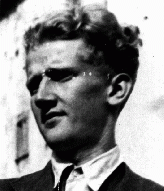
-
Dora Unger
ID CardDora, her parents, brother, aunt, uncle, and two cousins lived together in her grandfather's home in Essen, Germany. The Ungers were an observant Jewish family, and when Dora was 8, she began to regularly attend meetings of Brit HaNoar, a religious youth organization. 1933-39: In October 1938 a teacher, with tears in her eyes, came to Dora at the municipal pool, saying "Jews cannot swim here anymore." Just weeks later, on November 9, Jews were arrested and their property destroyed. A neighbor tried to…

-
Judith Beker
ID CardJudith was one of three children born to a Yiddish-speaking Jewish family living on a farm near the Lithuanian town of Jonava. Judith's mother had an extensive Jewish education and taught her daughters at home. Her son, Abe, attended a Jewish religious school in Jonava. Judith's father worked in the logging industry. 1933-39: In the fall of 1938, six months after her father died, Judith and her mother moved to Kovno, the capital of Lithuania. She was 9 years old. Kovno at that time had a large Jewish…

-
Aron Dereczynski
ID CardAron and his three sisters were raised in a traditional Jewish family in the town of Slonim. Most of Slonim's inhabitants were Jewish, and the town had a long tradition of Hasidic scholarship. Aron's father, Chaim, owned a yard-goods and clothing store. 1933-39: Aron attended a Hebrew-language middle school and was active in the Zionist youth movement, Ha-Shomer ha-Tsa'ir. He had been accepted to study in an agricultural school in Palestine when war broke out in September 1939 and Slonim fell under Soviet…
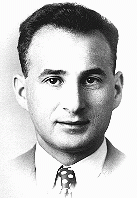
-
David Mendel Petranker
ID CardDavid was one of eight children born to observant Jewish parents living in the small town of Delyatin. During World War I, David served in the Austrian army. Following the war, he married Frieda Gaenger and moved to Stanislav [Stanislawow]. There, David worked in his father-in-law's lumber business. 1933-39: David had a post as vice-director of the forestry ministry's regional office. His three daughters attended private schools. David was an ardent Zionist, and looked forward to moving his family to…
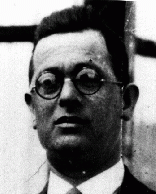
-
Edith Riemer
ID CardHela Pinsker and Elimelech Riemer were married in 1928. Two years later the Jewish couple's only child, Edith, was born. The Riemers lived in a comfortable apartment in Berlin, in a building that also housed offices of the Communist Party of Germany. 1933-39: Hitler banned the Communists, so their offices in Edith's building were shut down. When these offices were later broken into, the Gestapo blamed it on "the Jews." Though Edith's family wasn't involved, the Gestapo said that if the culprit was not…
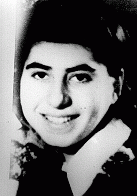
-
Natan Offen
ID CardNatan was one of four children born to religious Jewish parents. They lived in an apartment in Cracow's [Krakow] Podgorze district, a predominantly Jewish area on the southern bank of the Vistula River. Natan's father was a shoemaker until 1936, when he became a dealer in billiards equipment. His mother worked as a dressmaker. Natan and his siblings attended Polish public school. 1933-39: When Natan was 13 he built a crystal radio. Late at night, Natan and his father would listen to stations from all over…

-
Edit Grinsphun
ID CardEdit, the eldest of two children born to a Jewish family, was raised in Bulboaca, a Romanian village of 2,000 people. Her father was a farmer, and he also worked in the town's railway office. Edit attended public school for four years and then, at age 11, went to the nearby town of Bendery for high school. 1933-39: In Bendery, Edit's parents rented a room for her near the school. At school she studied several foreign languages, but she wasn't taught politics--the teachers said that politics was bad for…
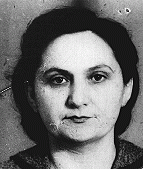
-
Sandor Braun
ID CardOften known as Sanyi, Sandor was born to religious Jewish parents in a small city in Transylvania, a province that had been ruled by Hungary until 1918. During the 1930s his home city was renamed I.G. Duca in honor of a slain Romanian leader. The fourth of six children, Sandor was also known by his Hebrew name, Yitzhak. The Brauns knew Yiddish, Hungarian, Romanian and Hebrew. 1933-39: Before Sandor's fourth birthday, a babysitter took him on an outing into the forest. When she fell asleep he wandered…
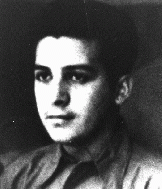
-
Herman Klein
ID CardHerman was the fourth of eight children born to a religious Jewish family in the small town of Sirma, located near the city of Sevlus. The Kleins had a small plot of land, which they farmed, and they also ran a shoe shop. At age four Herman began attending religious school. When he started public elementary school, he continued his religious lessons in the afternoons. 1933-39: In March 1939, the region of Czechoslovakia in which Herman lived was annexed to Hungary. His teacher at school was replaced by a…
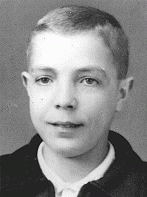
-
Klara Mintzberg
ID CardKlara grew up in Rzeszow, a Polish city with a population of approximately 30,000. The Mintzbergs were observant Jews. Klara's mother supported the family by running their fabric store. Her father was an ardent Zionist. He dreamed of immigrating to Palestine and encouraged Klara to join a Zionist youth group. 1933-39: After finishing secondary school, Klara was elected to serve on the board of directors of Poland's Ha-No'ar Ha-Ziyoni youth movement; she was the only woman on the board. She studied…
